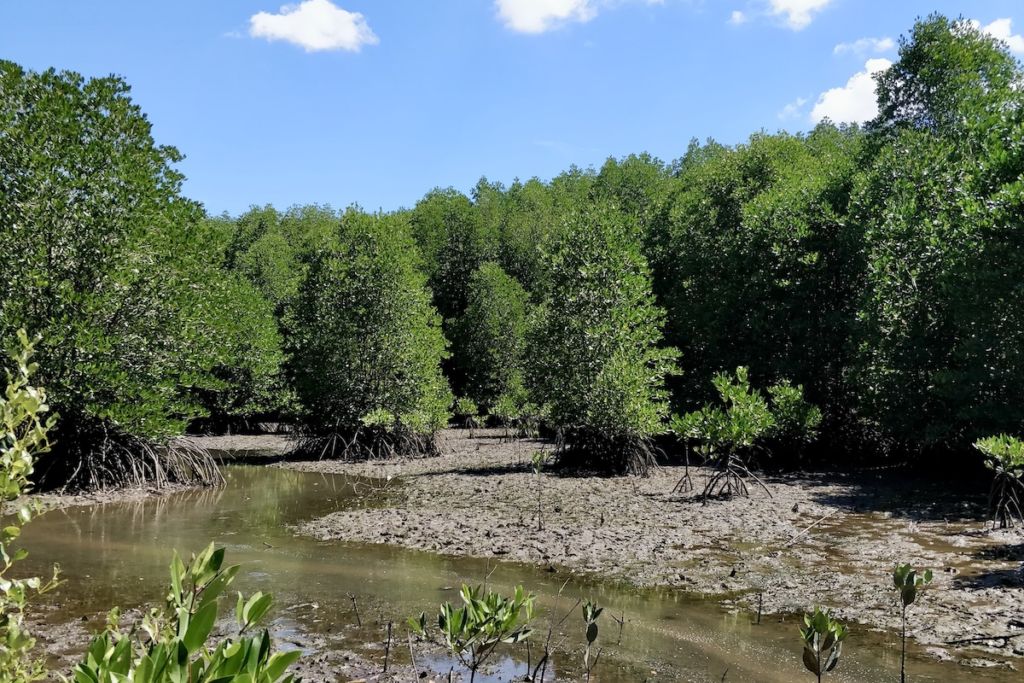Mangrove Program
Our Mangrove Program provides multiple impacts, from biodiversity revival to fish stocks restoration, through blue carbon sequestration and coastal protection.

The ocean: biggest carbon sink of our planet
83% of the global carbon cycle is circulated through the ocean. The term “Blue Carbon” refers to this carbon captured and sequestered by the world’s marine and coastal ecosystems (UNEP 2020).
Coastal ecosystems such as mangroves, macro-algae, tidal marshes and sea grass sequester carbon at a bigger scale than any other marine ecosystem. They are therefore our biggest ally against the climate crisis.

Mangroves, biodiversity and coastal protection
But mangrove forests aren’t only about carbon. They host a teeming variety of marine and terrestrial biodiversity, acting like a shelter for juvenile species. Restoring them helps maintaining fish stocks and preserving many endangered species.
Mangroves are also key ecosystems to protect coastal villages from the impacts of the climate crisis, especially floods, typhoons or tsunamis. By stabilizing the soils, they also help to limit erosion.
Dive into our mangrove forests
Move the logo to see one of our program before – after:





